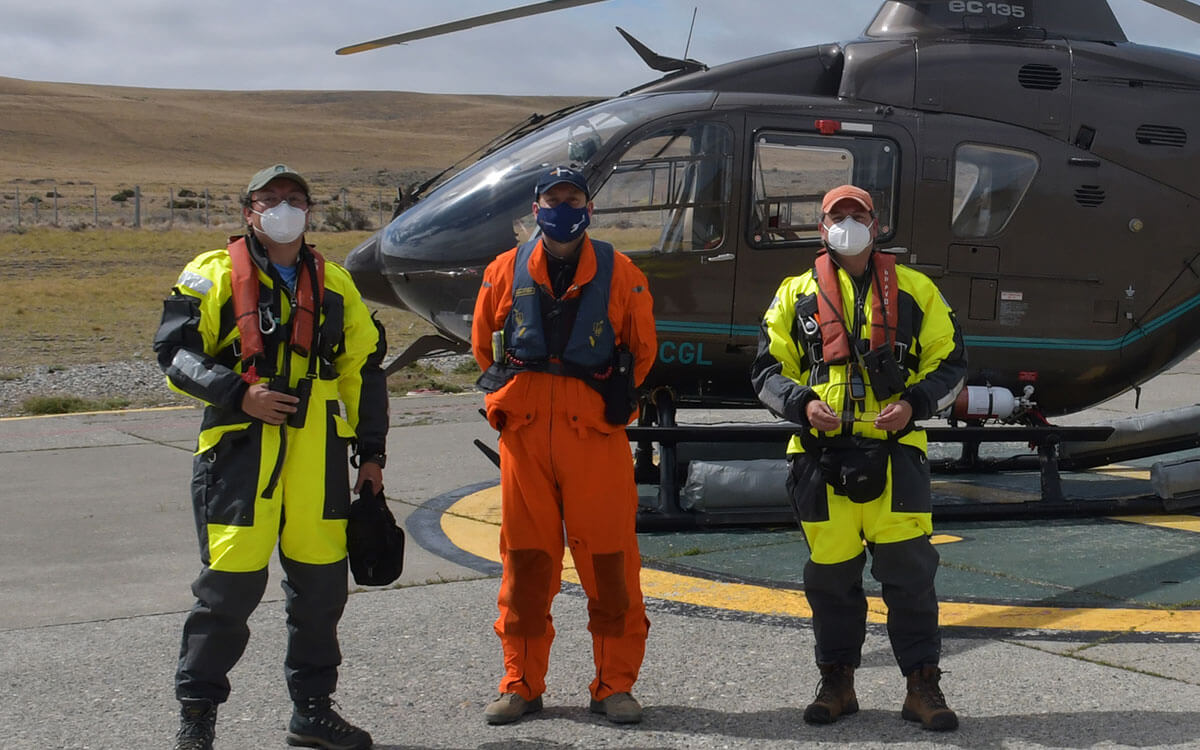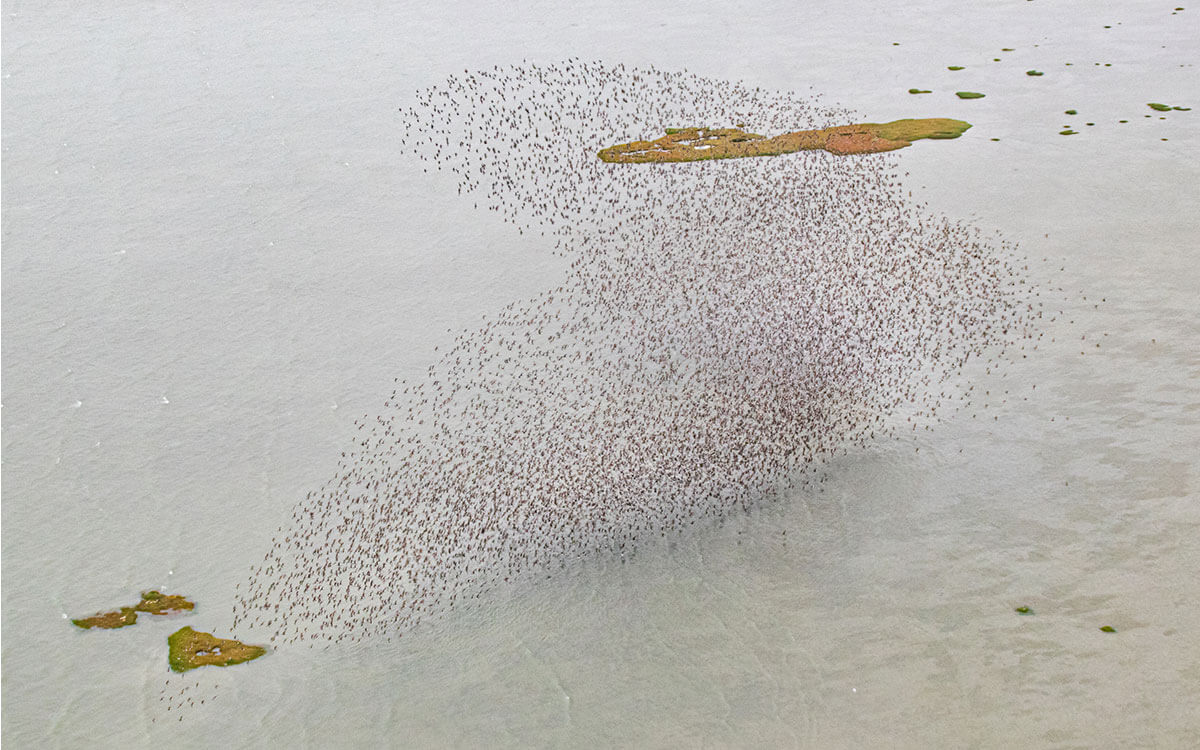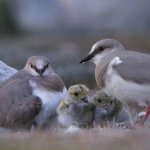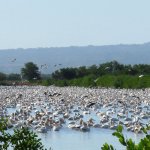By: Ricardo Matus, Centro de Rehabilitación de Aves Leñadura
Located in the Primavera commune (Tierra del Fuego-Chile), Bahía Lomas is a site of Hemispheric Importance in the Western Hemisphere Shorebird Reserve Network (WHSRN) and is the highest priority South American locality for the rufa Red Knot (Calidris canutus rufa). An aerial census was performed of the shorebirds in the bay on 15 January 2021 following the protocols described in the site’s management plan in reference to programs of investigation and long-term monitoring of migratory birds. The census was conductedthanks to the support of the National Petroleum Company (Empresa Nacional del Petróleo – ENAP) and the Universidad Santo Tomás (UST).. Particular emphasis was placed on the monitoring of the rufa Red Knot and the Hudsonian Godwit (Limosa haemastica).
Following the recording of a serious decline in the period 2000-2005 (when annual data was collected), the population of American Red Knot in Bahía Lomas has fluctuated between 9,500 and 15,000 individuals (data from annual censuses in the period 2005 to 2019). This differs from results at other sites in the wintering range of the rufa subespecies where one of the most serious declines has been observed at the WHSRN site “Reserva Costa Atlántica de Tierra del Fuego” (Rio Grande, Argentina) where as many as 5,000 individuals have been reported in the past (e.g. in 2002 and 2005). Since 2013 the counts have not surpassed 150 individuals. These declines are of concern for government agencies, universities and international organizations that work towards shorebird conservation in the Americas, and demonstrate the need for coordinated and collaborative work across the hemisphere in order to conserve the birds and their habitats.


Left: Heraldo Norambuena, Cristian Arenas and Ricardo Matus ready to start the aerial census. Right: Mixed flock of rufa Red Knot and Hudsonian Godwit. Photo: Heraldo Norambuena.
Dr. Carmen Espoz, Dean of the Faculty of Sciences at UST and Director of the Bahía Lomas Center (Centro Bahía Lomas), noted that “in the last few years we have increased the protection and monitoring efforts at Bahía Lomas, and this is how we were able to achieve the declaration of a Nature Sanctuary by the Chilean state April 2020, thereby creating new national and international collaboration opportunities”. Espoz added that currently the Bahia Lomas Sanctuary Management Plan is being finalized. This is being completed within the framework of the international Coalition for the Conservation of Shorebirdsproject, led by Manomet that works with local partners at 13 important sites to safeguard critical shorebird habitats and increase capacity for conservation action in the Americas., and with the additional support of the Competitive Innovation Fund (Fondo de Innovación para la Competitividad – FIC-Magallanes). This will strengthen the management and the conservation of the area over the coming years.
The 2021 aerial census was performed by experts Ricardo Matus (Centro de Rehabilitación de Aves Leñadura) and Heraldo Norambuena (Bahía Lomas Center) in a helicopter piloted by Cristián Arenas and provided by ENAP as part of the collaboration agreement that the company has with UST. The analysis of the data obtained from the aerial photographs was supported by Guy Morrison and Antonio Larrea.
In regard to the census results, Heraldo Norambuena, researcher at the Bahía Lomas Center, stated that “we were able to record large flocks of Red Knot and Hudsonian Godwit. Combining the counts of these flocks with other smaller ones observed throughout the bay, we totaled 12,243 individuals of Red Knot and 13,621 individuals of Hudsonian Godwit. This is a slight increase in the number of Knots from the 2020 estimate (11,545 individuals), even though it is consistent with the range of counts reported since 2005”. It is worth adding that the use of aerial photographs of flocks as a complement to direct counts has enabled researchers to make precise estimates, and in future aerial censuses the methodology will continue to be refined to make the most effective combined use of these results.
For more information about the conservation and management of this site, write to Dr. Carmen Espoz, Director of the Bahía Lomas Center or to Diego Luna Quevedo, Conservation Specialist, WHSRN Executive Office.
Cover Photo: Aerial view of WHSRN site Bahía Lomas. Photo: Antonio Larrea.






